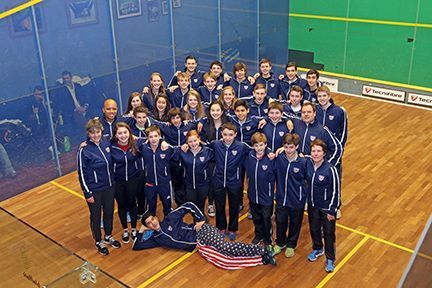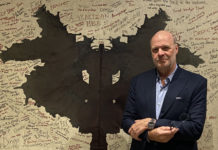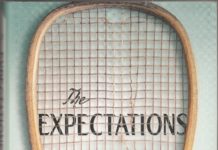
By Rich Wade
The Steel City of Sheffield is better known for its two soccer teams, the Owls (Sheffield Wednesday) and the Blades (Sheffield United) and for being the setting of the classic movie The Full Monty. But each January it is also home to the British Junior Open.
This year there would be a new twist to the event—the introduction of a Stars and Stripes team. Twenty-nine Americans, accompanied by six Team USA staff members, entered the BJO. Historically, very few Americans have played in the BJO. Founded in 1926, the BJO is one the most prestigious annual junior events and second only to the World Junior Championships. The only two BJO wins by American came in 2001 when Michelle Quibell captured the GU17 and in 2007 when Olivia Blatchford took the GU15. (Anil Nayar, later a U.S. citizen, won the BU19 in 1965 under the flag of India.)
When we arrived at Hallamshire Tennis and Squash Club, it had been ten years since I had played in the BJO. My distinct memory of the event was learning how to cope with the labels that many of the international players came with. On the one hand you are in awe of their ability, yet on the other hand the competitor in you wants to figure out a way to combat their multitude of shots. To this day we continue to preach how you must respect your opponent, but not put them on too much of a pedestal where they can’t be touched.
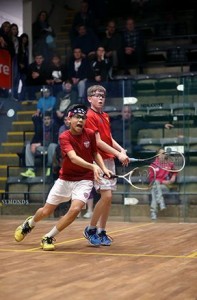
In contrast to the U.S. Junior Open, host to the biggest draws in junior competition, the BJO is smaller because each respective national governing bodies can only select five players to represent their country. But not every draw was full. In the GU13 age category, there was a draw of thirty-nine players: seventeen were English, five Egyptian, three Malaysian and four American, leaving only ten players from other countries to complete the draw. Although this is a disappointing statistic for an event of this caliber, we saw it as opportunity to make a name for ourselves and go from being a second-tier nation that is the best of the rest to one of the upper-echelon nations.
Nonetheless, as you walk around the venue, you know you are brushing shoulders with potential future world champions. (The Nick Matthew Championship Court at Hallamshire was home to the quartersemifinal and semifinal matches for the U13 and U15 draws and the famous glass court at Abbeydale was the central attraction for the U17 and U19. In total, between Hallamshire, Abbeydale and Fulwood, eighteen courts were used for the event.) The task for Team USA is to eventually produce a world champion, and experiencing international events like these will certainly aid our players’ development and provide motivation and inspiration to all.
There is an element of beauty to the Monrad draws, following your players through their wins and losses to their final finishing positions in their respective draws of sixty-four. There will likely be calls for change, for the introduction of new technology and live online draw updates, however it’s almost a part of our love affair with the BJO that we continue to accept the event for what it is—that all junior players coming through Sheffield have experienced the same thing that all those that came before them did too.
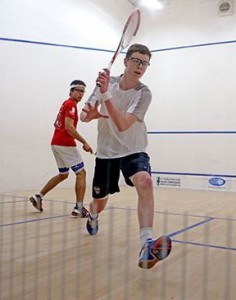
On court, the twenty-nine players averaged a final result of 22nd place; there was just one top eight finisher, Marina Stefanoni, who came in fifth in the GU13. Off the court, Team USA was often the talk of the event. The U.S. players looked professional in their uniforms, carried themselves extremely well despite entering most match-ups as the underdog and created a buzz in the stands with a strong support network ready to cheer on their teammates. Team USA also endeared themselves to the local community—something that isn’t very easy to do.
It was fascinating to see the U.S. players adapting to their new surroundings. Things as simple as the fact that some of our players had never played on plaster courts—they were used to the panel versions in the States—or had never played on courts that didn’t have a glass back. We swapped sushi and wraps for lasagna and curry. We realized that English muffins were simply called muffins and that you needed to look the opposite way when crossing the roads. Our trip coincided with the World Darts Championships—the players completely forgetting the NFL playoffs even existed and all became avid darts fans overnight. All of this merely created a stronger team identity and unity.


